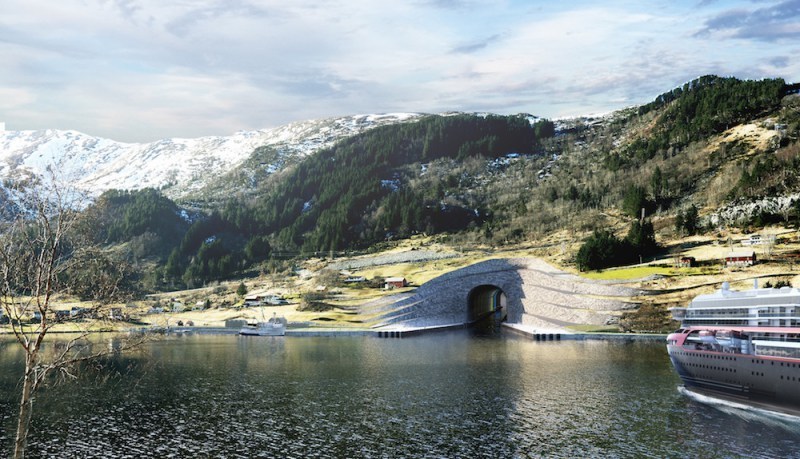World’s First Ship Tunnel to Bypass Norway’s Most Dangerous Waters

Norwegian officials have given the green light to fully finance what is set to become the world’s first full-scale ship tunnel, bypassing one of the most dangerous areas for vessels along the Norwegian coast.
The Stad Ship Tunnel will be blasted through 1.7 kilometers of rock at the narrowest point of the Stad Peninsula, allowing ships the size of Hurtigruten’s coastal steamers to navigate it.
What’s fascinating is that the tunnel isn’t expected to shave much time off the normal route, rather it is intended to allow ships to navigate more safely through the Stadhavet Sea, where the North and Norwegian seas meet. The Stadhavet Sea is considered one of the most exposed and dangerous areas for vessels along the coast of Norway, sometimes experiencing more than 100 storm days per year and a dangerous combination of wind, currents, and waves.
According to reports, 33 people have lost their lives in the area since the end of WWII.
The Norwegian broadcaster NRK reports that the Norwegian government approved the full NOK 2.7 billion in funds needed for the project on March 2. The funding will be provided in two phases beginning in 2018 and lasting until 2029, according to NRK.
The Norwegian Coastal Administration, which is responsible for the project, says construction will involve conventional blasting using underground drilling rigs and pallet rigs, which will be used to remove approximately 3 million cubic meters of solid rock from the mountainside.
The idea for a bypass route through Stad has been kicked around in Norway for decades, but the idea has picked up steam in the recent years following studies pinpointing the best route. In 2013, the Norwegian Parliament earmarked NOK 1 billion for the project in the final period of the National Transport Plan 2014-2023.
Once completed, the Stad Ship Tunnel will be 1.7 kilometers long, 37 meters high and 26.5 meters wide. Construction time is estimated to be approximately 3 to 4 years, but overall the project could span more than a decade from its potential start date sometime after 2018.
In addition to providing a safer route for sailors, the tunnel is also expected to serve as a popular tourist attraction with the potential for an overhead bridge that will be open to the public.
Source http://gcaptain.com